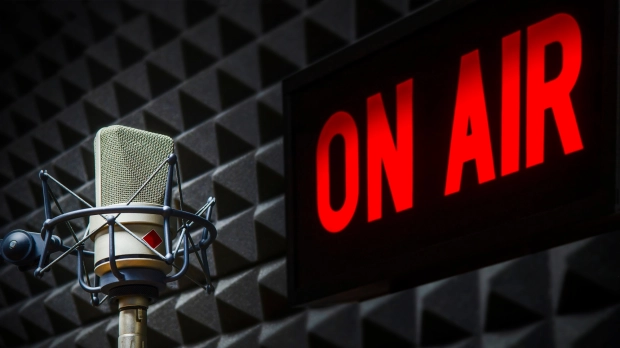Why are local radio stations still relevant in the age of digital media? Radio’s place in the present media world has been questioned and doubted, just like the place of many traditional formats from the days before digital. But it has happened before. Back in the 90s, when radio began to appear in various homes, people said this “old media” would soon die out. Even though there are only a few stations in business, the development of stereo signals and new techniques for organizing content took radio to new heights.
This was partly because radio was getting into another great invention. How does radio fit into our lives today, and more importantly, how does it fit into our marketing and media plans? Well, the good news is that radio is still alive and even doing well. Let’s consider content channels. Radio now has a new way to reach people: the web. Radio still does well in cars, which may be the most important place to listen to it.
It stays in a lot of offices and homes, too. The total number of listening hours per week remains pretty significant compared to even five years ago. Indigenous community radio stations play an important role by giving communities important information in their own languages that influences their way of life. They are always changing to deal with new technology, like when they switched from AM to FM and from analog to digital.
Many people also use the Internet, which is the information superhighway, though they often can’t do everything they want to. Internet access is something that radio stations keep talking about and asking for. Even though there are economic limitations, a lack of infrastructure, low and poor quality connectivity, and competition from dominant media content, community radio stations that have been able to access the internet are now expanding their coverage, engaging with a wider audience, and growing their reach.
Many radio stations use and take advantage of different mobile apps that let people listen to their shows and engage with the radio. This is especially helpful for people who have moved to other cities or countries but still want to know what’s going on back home and stay in touch with their people.
A lot of radio shows are now being put on different digital platforms. This creates an archive of information that can be accessed at any time. In the same way, the internet has made it possible for radio stations to reach more people, even beyond the area around the station where the signal from the transmitter reaches. Mobile phones have also become a powerful tool that has made it easier for people to listen to community radio and its programs.
Local radio stations are still a way for indigenous languages, cultures, and ideologies to be shared and kept alive. It is also still a main way for the people it serves to learn about and talk about issues that affect and interest them, especially in rural areas where internet access isn’t always reliable. At Primus Media City, we have seen for ourselves why local radio stations are still important in the age of digital media, despite the increasing constraints.
People Also Read: Top 7 Reasons People Own Radio Station
Reasons Radio is More Relevant Than Ever

Even though it has been around for more than a couple of centuries, radio is still a popular means of communication and entertainment. Although newer technologies and media have come out, radio has kept its importance and still plays a big role in our daily lives. Here are 10 reasons why radio is more important than ever:
1. Radio is Immediate
Radio is one of the fastest ways to get your message to people. People can rely on the radio to tell them what’s going on “right now.” As radio shows air, listeners can hear them in real time. Broadcasters give them entertainment, news, and information that is up to date. Radio lets businesses connect with listeners in real time, whether the announcers are talking about breaking news, sales and promotions, or events.
2. Radio Reaches Everyone
Radio is one of the best ways to reach as many people as possible. With more Nigerians listening to AM/FM radio, you can reach more people with your message while still being able to target people across different station settings.
Radio has a large number of listeners and a wide range of people who listen to it. With radio, you can reach a large group of people who are like your customers in terms of their demographics. Radio is a matching channel that reaches people while they are at work, at home, or on the go.
3. Radio is Adaptable
Radio has transformed as technology and consumer tastes have happened to change. You can now listen to radio on laptops, computers, phones, and web platforms. People can listen to their favorite radio stations at any time and on any device that works best for them. Radio listeners don’t have to be in a certain place at a specific time, like they do with other types of media.
This makes radio even easier to use. Technology and marketing trends change and grow all the time, but radio has stayed the same. Even as new forms of media and marketing come out, radio is still one of the best ways to reach people because it is versatile and adaptable.
4. Radio is Cost-effective
Radio is a better way to reach people. With radio, one transmitter can reach a large area, no matter how many people are listening. This helps you get the most out of your marketing budget by letting you reach more people for less money.
People Also Read: ARCON Commences Full Regulation of Skit Makers, Bloggers

5. Radio Can Segment and Target a Specific Audience
Any advertising campaign needs to reach the right people at the right time to be successful. Because radio has so many styles and stations, advertisers can reach the people who are most likely to be interested in their products or services.
6. Radio is Local
Radio stations have always been an important way for people in the areas they serve to find out about what’s going on nearby. Local radio advertising is one of the best ways to reach customers in their own neighborhoods. Using on-air talent as endorsers and influencers is one of the best ways to make that connection. People trust on-air personalities, and those special connections can help your messages reach more people.
7. Radio is Interactive
Radio can feel like a one-on-one conversation with each listener. Call-in segments on shows give listeners a chance to take part and be heard. Giveaways are a way to thank loyal listeners and get more people interested in the radio station. Polls let people see how other people feel about the same things.
Social media presence gives people a place to talk to the stations and the people who work there in a more personal way. Radio lets people interact with a show or personality in ways that they can’t do with other forms of media. And often, radio can make people think and talk to the people around them.
8. Radio Has a Good Value
Advertising on the radio is often cheaper than advertising on TV or in the newspaper. Because radio advertising is so cheap, it can be used by small businesses and organizations that might not be able to use other forms of advertising. Radio can also get people interested by having interactive shows, contests, and call-ins. This kind of interaction can make a station feel like a community, which can be good for both the station and its advertisers.
9. Radio Can be Life-saving
In an emergency, radio broadcasts are one of the most important ways to get information out. When a disaster happens or is on the way, you can count on the radio to keep you informed. Even if the power goes out, a radio that runs on batteries can still give you information that could save your life. Radio has always been a reliable source that people can count on in times of trouble.
10. Radio is 24/7
Radio is always on and ready to be listened to. Radio has always been a part of our lives for many years. Even though technology and ways to communicate are always changing, radio stays the same and is much-loved and reliable. Taking a look at some radio stations in Ibadan, the likes of Agidigbo FM, one of the fast rising radio stations, their 24/7 operation times make it possible for listeners to stay informed at any point in time.
People Also Read: Ilaji FM Commences Online Test Transmission
Conclusion
Radio has managed to remain relevant and important in the age of digital media due to its adaptability and ability to reach a diverse audience. Radio has not only survived but has also managed to thrive by leveraging technology to expand its reach, using the internet to offer archived content, and creating mobile applications to connect with a broader audience.
For Indigenous communities and rural areas with limited internet access, local radio stations continue to play a vital role in communication, language revitalization, and community engagement. Furthermore, radio remains an effective and cost-efficient way to reach a broad audience while targeting specific demographics. With its immediacy, local focus, and adaptability, radio continues to be a valuable medium for communication and entertainment, proving that radio is here to stay.
READ MORE
Radio Boom and the forlorn hope of Radio Up Comers
Trouble in Paradise…Crisis already brewing in one of the new Radio stations in Ibadan
Dear Media Stakeholders, Safeguard The Future Of Media

